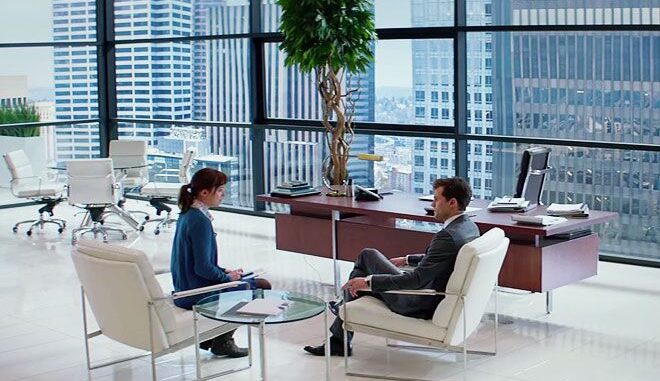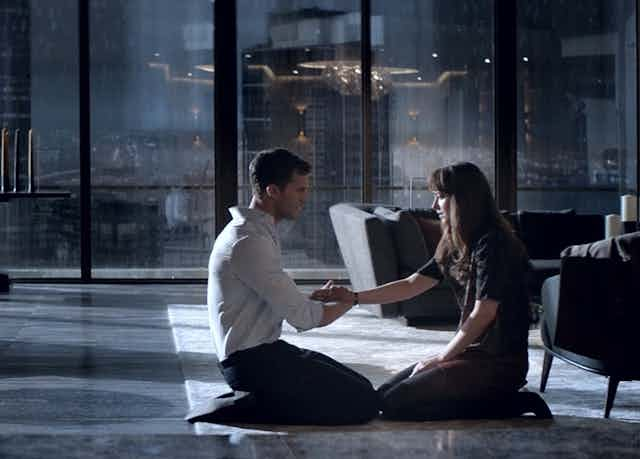
You guys, I am freaking out at my desk. I just watched the BRAND-NEW trailer for 50 Shades of Grey, hitting theaters on Valentine’s Day 2015, and I have the full-blown chills minutes after finishing the two-and-a-half-minute clip. Featuring a sultry, slowed-down version of “Crazy in Love” by Queen Bey herself, the trailer follows the shy Anastasia Steele, played by Dakota Johnson as she meets, gets to know and maybe even (no spoiler alerts!) fall in love with advertising exec Christian Grey, gorgeously executed by Jamie Dornan.
Anyway, lest I spoil the eye candy for you anymore, go ahead and watch the trailer below. Fair warning: The last 15 seconds take place in his Red Room of Pain, which, well, is pretty NSFW. (Unless you work at SELF like me, hollerrr!) Watch below and then tell us what you think. Will you be flocking to theaters on February 14, 2015? I definitely will…
At the end of Fifty Shades of Grey, the first in E L James’ trilogy of novels now adapted as films, protagonist Anastasia ends her abusive relationship with the dominating businessman Christian Grey. She had attempted to understand his dark side, by “allowing” him to beat her. Traumatised, Anastasia vowed never to see him again.
The sequel, Fifty Shades Darker, opens in Australia this week. The movie is targeted at women. One of us attended a “girls’ night out” premiere. As they arrived, attendees were given beauty products and vaginal wipes.
Equipped to transform themselves into sexually desirable conquests, the audience was there to witness Anastasia’s tokenistic resistance to Mr Grey’s domination and demands. The film attempts to persuade us that claiming a male fantasy as our own, is, in fact, empowering — and the perfect way to get the guy.
After the first movie, there was debate about its romanticisation of an abusive relationship. The sequel confirms that this wasn’t a misconception. As researchers, we are interested in the representation of women’s sexuality in media and how this influences women’s sexual health. Films such as Fifty Shades Darker, seen by millions of men and women around Australia, have the power to influence our perceptions of women’s sexual agency.

